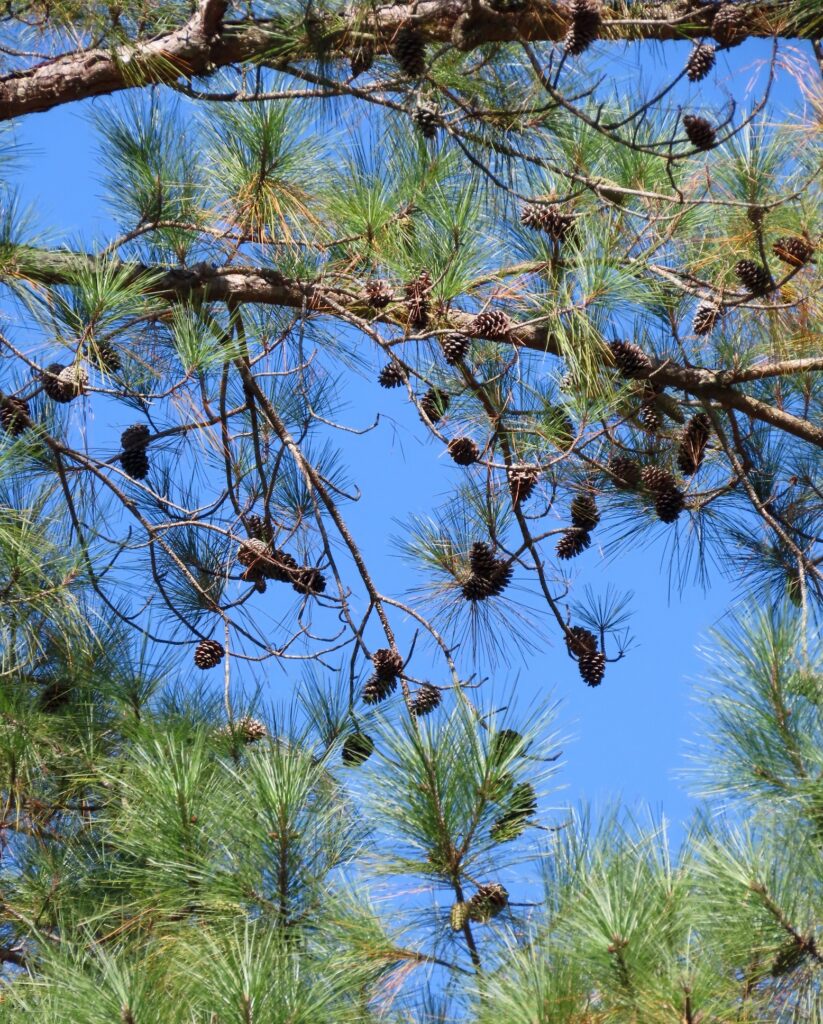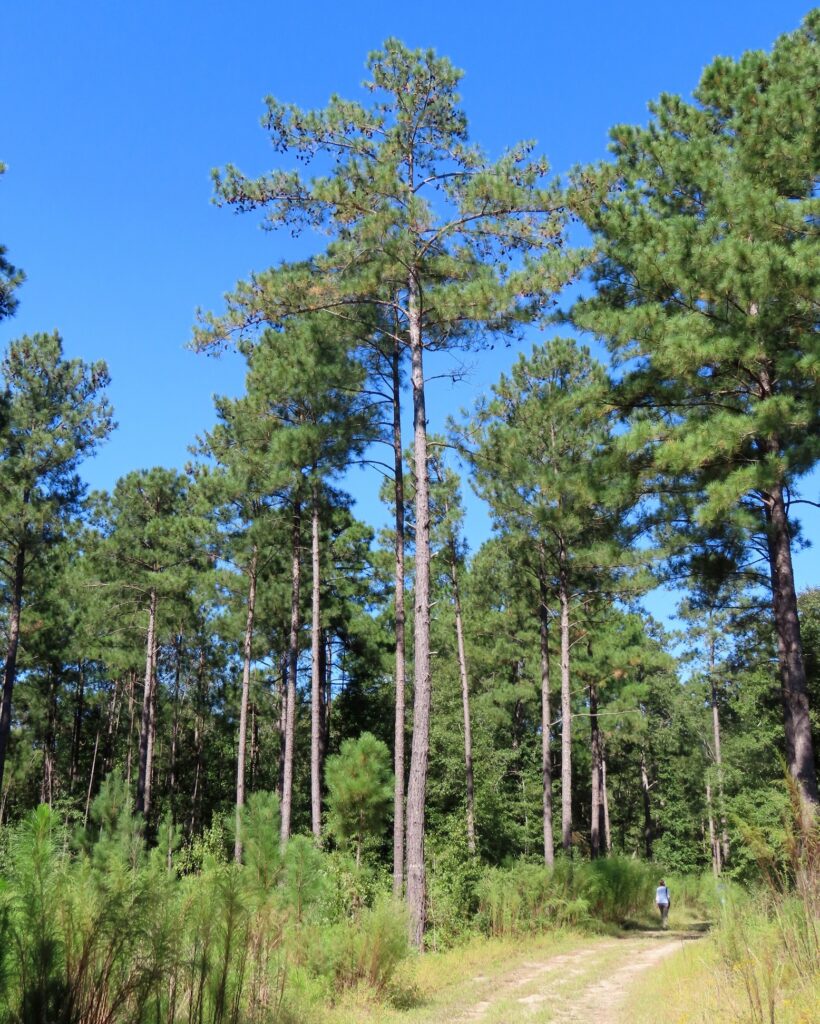



This week for Flora and Fauna Friday, it’s an economic juggernaut and pollen powerhouse, Loblolly Pine (Pinus taeda).
Loblolly Pine is found throughout the southeastern United States and is ubiquitous in all but the highest reaches of South Carolina. It grows arrow-straight and can get quite tall and wide in ideal conditions. Its needles are about hand length, not too long but not particularly short. These needles skirt their narrow twigs for a foot or more down the branch, often covering the entire branch in saplings. These medium-sized needles and “leafy” branches are key to telling them apart from other pine species. Their cones are also moderately sized with sharp spines and, when dry, have a pale gray color to their exterior. These cones yield a one-winged seed, called a samara, which is blown by the wind into the surrounding area of the parent tree, or is plucked from the cone and eaten by birds and squirrels. Loblolly Pine is a generalist with rapid growth, a relatively short lifespan, ability to grow in poor soils, and tolerance for drought, flooding, and fire. Which is why it has come to be the number one timber species in all of the Southeast. It grows fast, straight, and will tolerate just about any soil long enough to make a harvestable crop of timber. This has made it the most common tree species in the modern South Carolina landscape. Nearly half the trees in South Carolina are Loblolly Pine. Yet, it was not always this way.
Historically, Loblolly Pine was found on floodplains, the margins of swamps, and other disturbed areas with moist soils. The other ecosystems of the Southeast were dominated by longer-lived or better adapted species of pine. Longleaf Pine dominated the fire-ravaged sandhills and flatwoods. Pond Pine dotted the Carolina Bays and depressional wetlands. Those same depressions were ringed with Slash Pine in the south, who also stood firm on the barrier islands. Shortleaf Pine blanketed the uplands. Virginia Pine and Pitch Pine stood upon the mountains. This left only the flood-prone fringes of rivers and swamps and other opportunistic habitats for Loblolly Pine. However, after European colonization, this ecological balance was upset. Old-growth stands of Longleaf and Slash Pine were felled and replaced with pastures and fields. Fire was suppressed on the landscape, hampering the regeneration of most Pine species, but not Loblolly. Loblolly Pine quickly colonized these disturbed areas and established a foothold in abandoned fields and windrows. When the demand for timber eventually outpaced the supply from old-growth forests, silviculture became widely profitable and the Loblolly Pine was the obvious choice for a staple cash crop in the Southeast. It has since been selectively bred to improve its form and growth rate across a wide range of soils, creating the modern Loblolly Pine that saturates the South Carolina landscape. We also have Loblolly Pine to thank for the smothering yellow fog we in the Lowcountry experience every February, as the male pollen cones of millions of Loblolly Pines simultaneously open, powder-coating our cars and waterways in pastel-yellow for weeks.